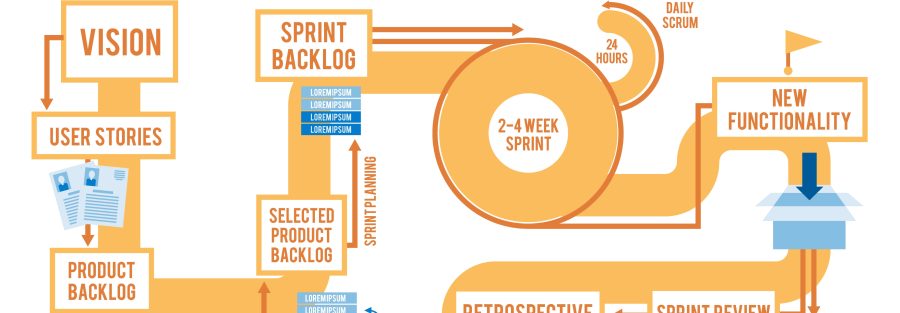Work Performance Management (WPM) can be applied to a project using Scrum, an agile project management framework, to ensure that the team’s work aligns with project goals and objectives. While Scrum provides a framework for managing the development process, WPM helps ensure that the team’s performance and outcomes meet the project’s requirements and expectations.
Here’s how to integrate WPM into a Scrum project:
Set Clear Project Objectives:
Start by defining clear project objectives, including scope, timeline, and desired outcomes. Ensure that all team members understand these objectives.
Sprint Planning:
During Sprint Planning, collaborate with the Scrum Team to set specific goals for the upcoming sprint.
Clearly define the user stories, tasks, and acceptance criteria that need to be completed during the sprint.
Performance Metrics and KPIs:
Establish key performance indicators (KPIs) and metrics that are relevant to the project’s success.
Metrics might include velocity, sprint burndown charts, and product increment quality.
Daily Stand-up Meetings:
Conduct daily stand-up meetings (Daily Scrum) to monitor progress and address any obstacles.
Use these meetings to discuss individual and team performance, focusing on what was accomplished, what is planned, and any impediments.
Sprint Review:
At the end of each sprint, hold a Sprint Review meeting to evaluate the work completed during the sprint.
Assess whether the delivered product increment aligns with the project’s objectives and meets user requirements.
Sprint Retrospective:
Conduct a Sprint Retrospective to reflect on the team’s performance during the sprint.
Discuss what went well, what didn’t go well, and identify areas for improvement.
Continuous Improvement:
Encourage a culture of continuous improvement within the Scrum Team. Use insights from retrospectives to make necessary adjustments to processes and workflows.
Performance Feedback:
Provide regular feedback to team members on their performance, both individually and as a team.
Recognize and acknowledge achievements and address any performance issues constructively.
Alignment with Business Goals:
Ensure that the work being done in each sprint aligns with the project’s overall business goals and customer needs.
Documentation and Reporting:
Maintain records of sprint progress, sprint reviews, and retrospectives.
Use this documentation to assess how well the team is meeting project objectives and to identify trends over time.
Collaboration and Communication:
Foster effective collaboration and communication among team members, stakeholders, and product owners to ensure everyone is on the same page regarding project goals and progress.
Adaptability:
Embrace Scrum’s iterative and adaptive nature, allowing the team to respond to changing requirements and priorities while maintaining a focus on delivering value.
By integrating Work Performance Management practices into your Scrum project, you can enhance transparency, track progress effectively, and ensure that the team’s work aligns with the project’s objectives and customer expectations. This approach helps optimize project performance and fosters a culture of continuous improvement within the Scrum Team.

